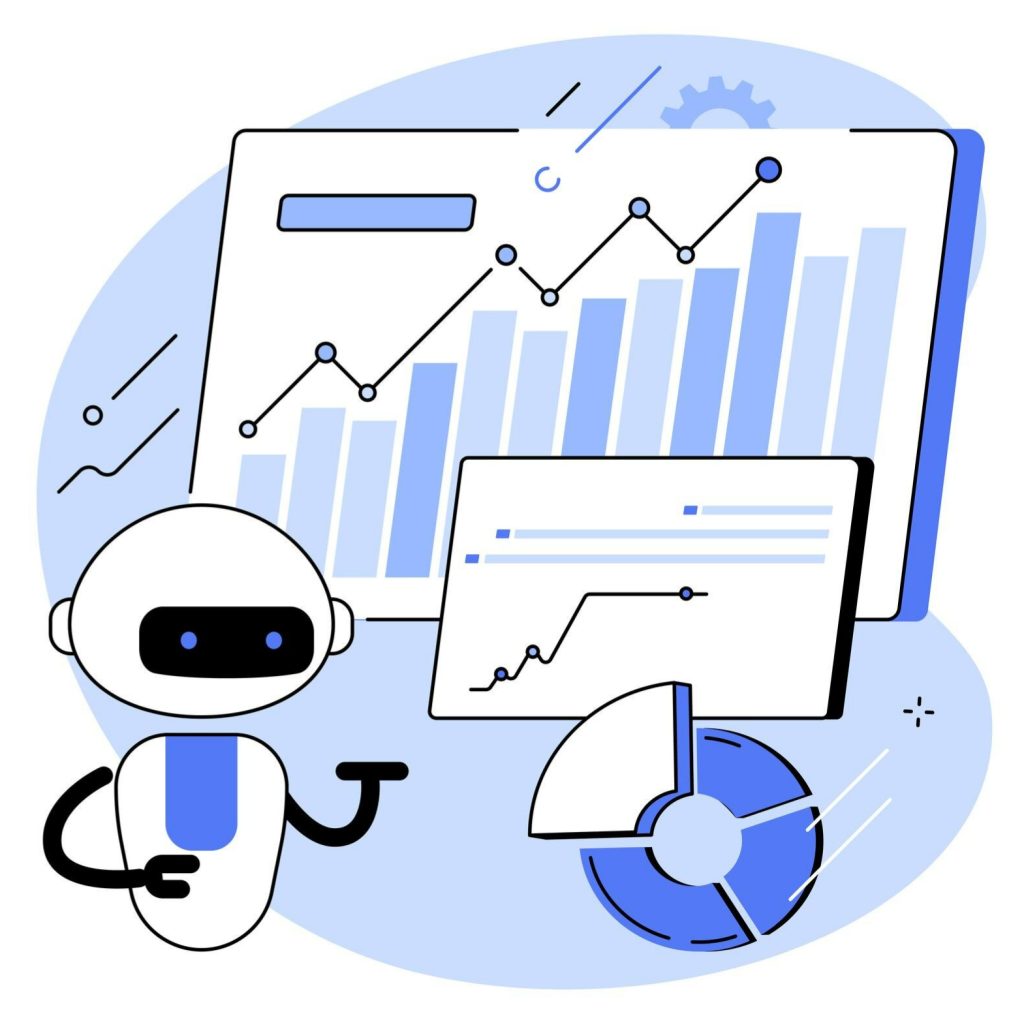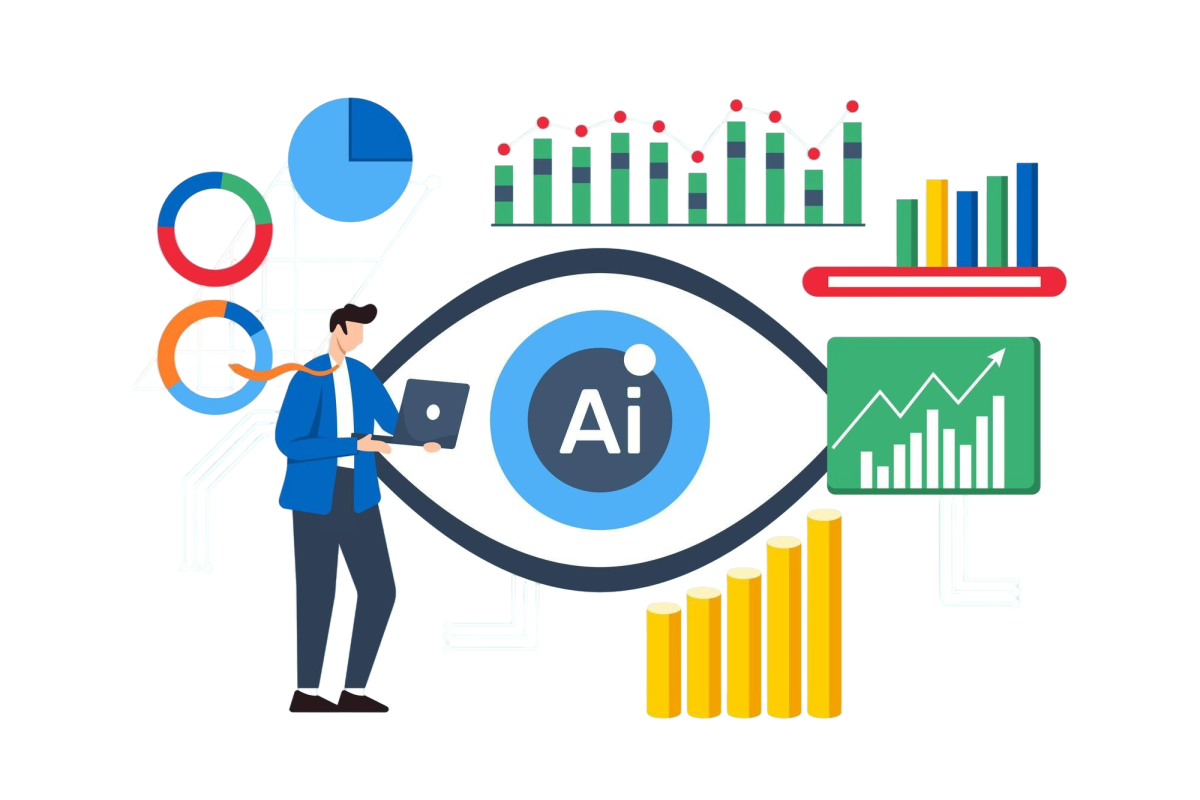Sales forecasting has always been a crucial part of business strategy. However, traditional methods often rely on guesswork or outdated data, leading to missed opportunities or costly errors. Enter AI for Predictive Sales Analytics—a modern, data-driven approach that leverages artificial intelligence to generate accurate sales forecasts, uncover customer behavior patterns, and guide smarter decisions. In this blog, we explore the potential of AI for Predictive Sales Analytics, how it works, how to use it effectively, and why adopting this technology is essential for sales teams that want to stay competitive.
By – Vamsi Bhumireddy
What is AI for Predictive Sales Analytics?
AI for Predictive Sales Analytics refers to applying artificial intelligence and machine learning models to historical sales data to forecast future outcomes. These systems analyze complex data sets to predict sales trends, customer lifetime value, lead conversion likelihood, churn probability, and more.
Unlike traditional analytics tools, which focus on past performance, AI enables forward-looking insights that empower teams to act preemptively. This shift from reactive to proactive strategy is what makes AI for Predictive Sales Analytics a game-changer. It allows sales leaders to allocate resources more effectively, personalize customer interactions, and optimize the sales funnel accurately.
How to Use AI for Predictive Sales Analytics
To fully leverage AI for Predictive Sales Analytics, businesses need to follow a structured approach that combines data readiness with the right tools and strategic execution.
1. Collect and Clean Your Data
Start by consolidating historical sales data, CRM inputs, customer behavior, website interactions, and third-party market insights. AI models require large volumes of clean, structured data for accurate analysis. Remove duplicate entries, fill gaps, and standardize formats to prepare your data for machine learning models.
2. Choose the Right AI Platform
Select an AI platform that supports predictive modeling and integrates with your existing sales and marketing tools. Popular platforms may offer pre-built predictive models or allow custom development, depending on your use case.
3. Define Specific Sales Objectives
Focus your AI model on clear goals such as improving lead scoring, forecasting monthly revenue, identifying upsell opportunities, or predicting customer churn. AI for Predictive Sales Analytics delivers the best results when it’s aligned with your specific KPIs.
4. Train and Test Your Models
Use a portion of your historical data to train your AI model. Then, validate its accuracy by testing it against actual outcomes. Adjust the model parameters until the predictions align with real-world results. This iterative approach helps refine the model for better accuracy.
5. Integrate into Daily Workflows
Integrate AI-generated insights directly into your CRM or sales dashboard. This empowers your sales reps with real-time recommendations on which leads to pursue, when to reach out, and what messaging is most likely to convert.
6. Monitor and Update Regularly
AI models learn over time. Regularly feed them with updated sales data, customer behavior, and market trends to improve accuracy. Monitor performance and retrain models as your business evolves.
 The Benefits of AI for Predictive Sales Analytics
The Benefits of AI for Predictive Sales Analytics
Implementing AI for Predictive Sales Analytics delivers tangible advantages that elevate your entire sales process.
1. More Accurate Forecasts
AI reduces forecasting errors by analyzing patterns too complex for manual interpretation.
2. Higher Lead Conversion Rates
AI identifies high-potential leads based on behavioral and historical data, enabling more focused outreach.
3. Improved Customer Retention
Predictive models can flag customers at risk of churning, allowing you to intervene with personalized offers or support.
4. Efficient Sales Planning
Sales teams can allocate resources more effectively, plan campaigns based on predicted outcomes and prioritize accounts that yield the highest ROI.
5. Faster Decision Making
Sales leaders gain instant access to data-driven insights, reducing the time spent on guesswork or manual analysis.
Examples of AI for Predictive Sales Analytics in Action
Here are several real-world use cases showing the versatility of AI for Predictive Sales Analytics:
1. E-commerce Optimization
An online retailer uses AI to predict which customers are likely to buy specific products, enabling personalized product recommendations that increase average order value.
2. B2B Lead Scoring
A SaaS company applies predictive analytics to score inbound leads and prioritize those most likely to convert based on historical customer behavior.
3. Churn Prediction
A subscription-based service uses AI to identify at-risk customers and automatically triggers retention campaigns.
4. Territory Planning
A field sales team uses AI to analyze customer buying cycles and recommends which geographical areas to focus on in upcoming quarters.
5. Dynamic Pricing
Retail businesses use AI for predictive modeling to forecast demand and adjust pricing in real time to maximize profitability.
 What Happens When Companies Ignore Predictive Sales Analytics?
What Happens When Companies Ignore Predictive Sales Analytics?
Companies that do not embrace AI for Predictive Sales Analytics often face significant setbacks. Forecasting remains unreliable, sales efforts lack focus, and customer insights are fragmented. Without AI-driven foresight, sales teams may invest time in low-value leads or miss key opportunities to upsell existing clients. Decision-making becomes reactive rather than strategic, and businesses lose their competitive edge.
Moreover, manual processes are time-consuming and error-prone. In high-volume sales environments, failing to use AI can lead to inconsistent pipeline performance, missed revenue targets, and inefficient resource allocation. In today’s data-rich world, relying solely on human judgment without the support of AI analytics is not only risky but also limits growth potential.
How Stratpilot Enhances Predictive Sales Strategies
Stratpilot is your AI productivity companion that supports strategic decisions, including AI for Predictive Sales Analytics. While not a full-scale CRM or sales platform, Stratpilot augments your existing tools by delivering AI-driven insights directly into your workflow. Its intelligent prompt system helps sales leaders quickly analyze pipeline health, assess lead quality, and generate data-backed forecasts.
Whether you’re managing quarterly sales goals or optimizing your team’s focus, Stratpilot simplifies the process with intuitive dashboards and intelligent recommendations. It transforms complex data into actionable steps that improve conversion rates, customer targeting, and forecasting accuracy. With Stratpilot, businesses gain the clarity they need to make smarter, faster, and more informed sales decisions.
Ready to harness the power of AI for Predictive Sales Analytics? Stratpilot can help transform how you forecast, plan, and execute sales strategies. Sign up today and empower your team with intelligent tools that drive results and elevate your performance in a competitive marketplace.
Frequently Asked Questions (FAQs)
Q1: How can AI improve lead scoring for sales teams?
AI can analyze historical customer interactions and behavior patterns to score leads based on their likelihood to convert. This allows sales teams to focus their efforts on the most promising opportunities, improving efficiency and conversion rates.
Q2: Is it difficult to implement AI for Predictive Sales Analytics?
Implementation depends on your current tech stack and data maturity. With the right tools and data preparation, many platforms offer out-of-the-box AI models or integration options that simplify the process.
Q3: Can AI help with upselling and cross-selling?
Yes. By analyzing purchase history and customer behavior, AI can recommend products or services that are most relevant to individual customers, increasing the chances of successful upselling or cross-selling.
Q4: What data is needed for predictive sales analytics?
You need clean and structured data, including CRM records, customer behavior data, sales transactions, marketing touchpoints, and other relevant performance metrics.
Q5: How often should predictive models be updated?
To maintain accuracy, predictive models should be retrained regularly, especially as new customer data, sales outcomes, and market conditions evolve. Continuous updates ensure the AI adapts to current trends.





